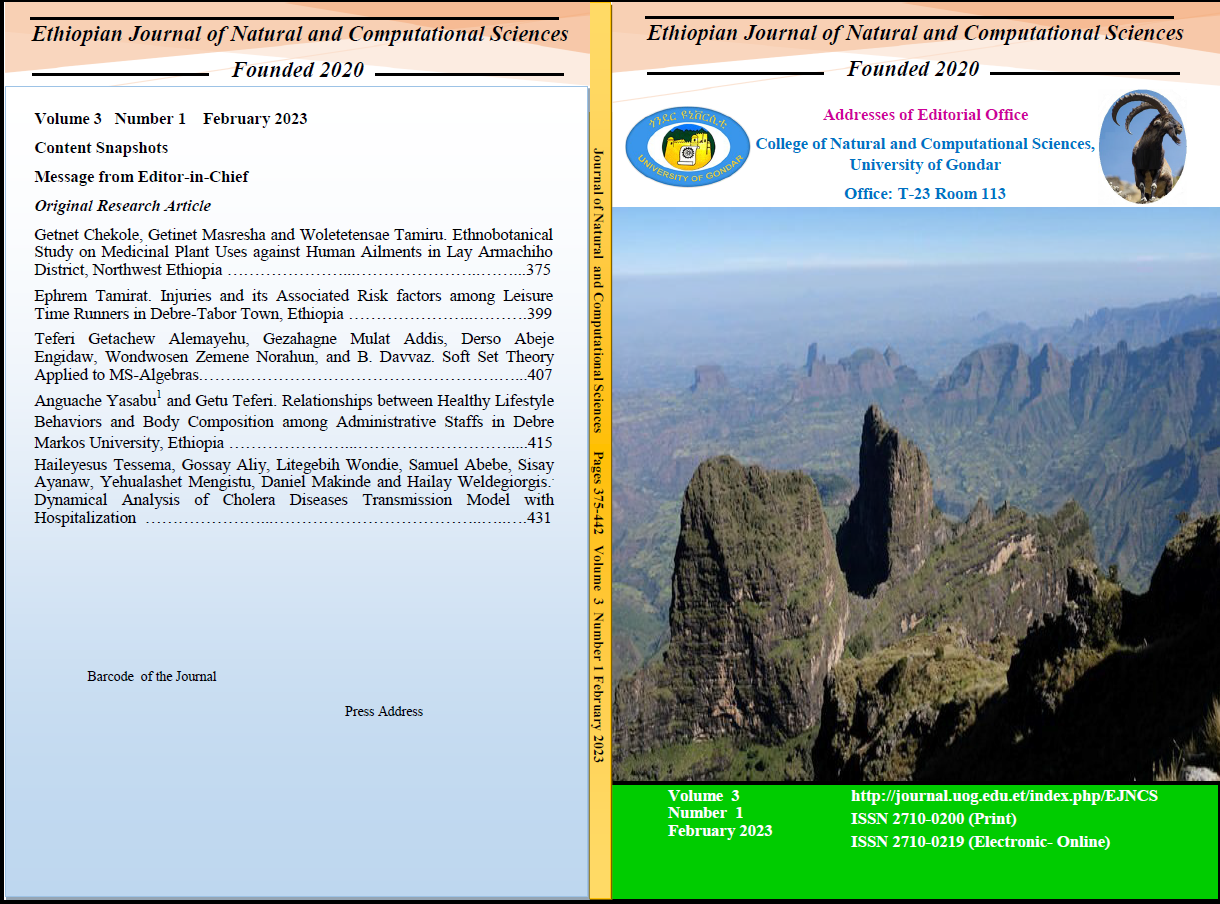Injuries and its Associated Risk factors among Leisure Time Runners in Debre-Tabor Town, Ethiopia
Abstract
Running is the most popular physical activities enjoyed by people around the world. People seeking a healthier lifestyle through weight control and improved exercise capacity frequently choosing running, as this has been considered to be of low cost and can be easily implemented. Despite these health benefits, running injuries are common. The purpose of this study is to determine the prevalence of running-related musculoskeletal injuries among leisure time runners over a 6-month period. A cross-sectional study design was used for this study. The participants of the study were leisure time runners of Debre-Tabor Town. From the registered participants (350), 323 (155 female & 168 male) runners were included and completed the questionnaires, which yielded a response rate of 92.28%. In the current study, 188 injuries were occurred during the study period, giving an injury prevalence of 0.58 per leisure time runner. Of these, the prevalence of injuries was 0.58 on females and 0.57 on males. The occurrence of injuries on the runners, 62/106(58.5%) were during competition, 36/106(33.96%) during training and, 8/106 (7.55%) of the injuries were occur during warming up. The rate of injuries on Knee, foot and ankle were 38.3% (72/188), 30.85 %( 58/188) and 17.55 %( 33/188) respectively. In this retrospective study, the prevalence rate of musculoskeletal running-related injuries during the study period was 58.2%. The most frequent injuries reported by the runners were tendinopathies and muscle strain/rupture followed by abrasion and the knee and foot/toe was the most affected anatomic sites.

